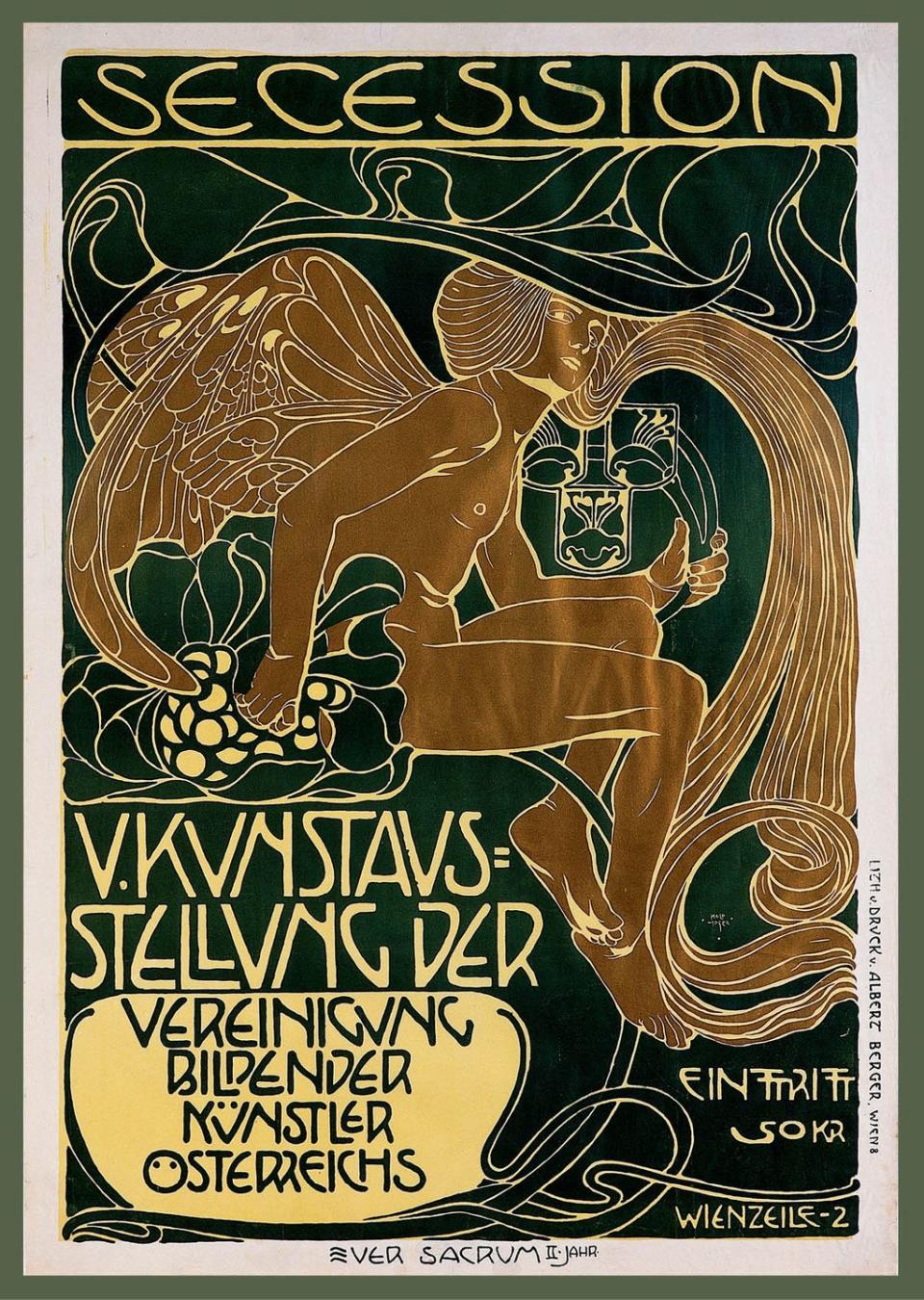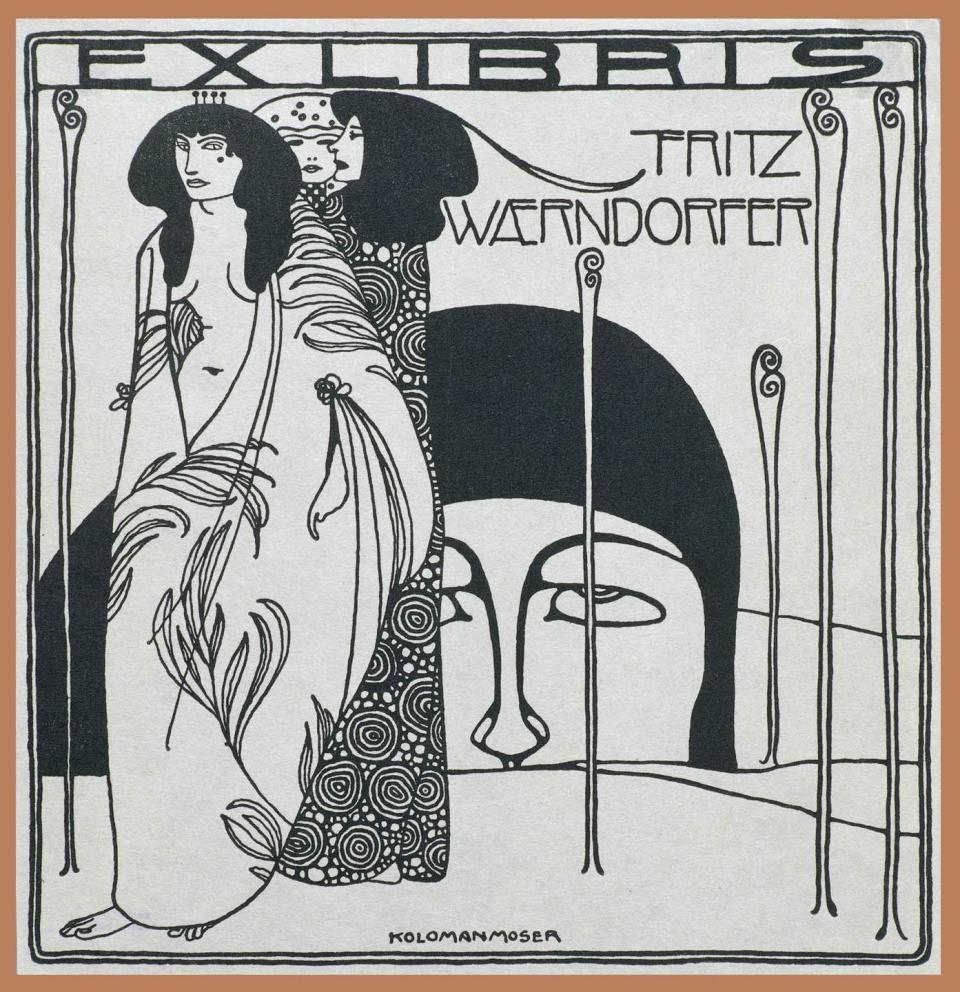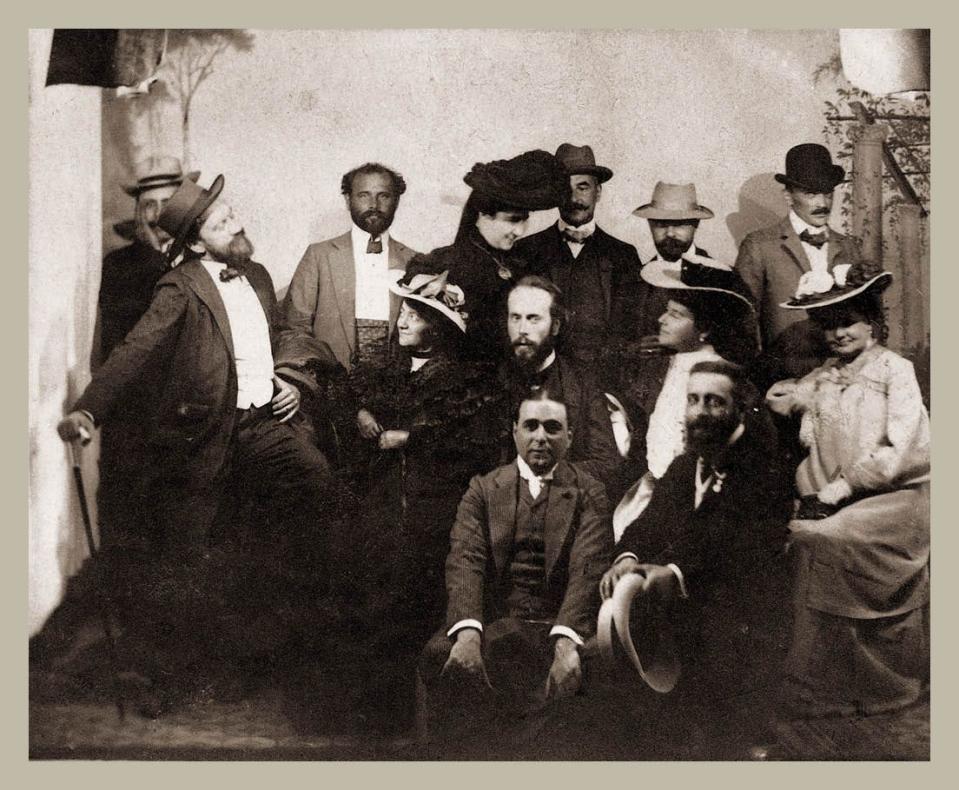What's a "Gesamtkunstwerk"? Why This Concept Is a Key Part of Design History

- Oops!Something went wrong.Please try again later.
- Oops!Something went wrong.Please try again later.
- Oops!Something went wrong.Please try again later.
“Hearst Magazines and Verizon Media may earn commission or revenue on some items through the links below.”
Even if you’ve never been to Paris, you’re probably familiar with Art Nouveau, a style characterized by organic lines and flourishes that take the shape of flower buds, insect wings, and other natural elements. The iconic posters by Toulouse Lautrec and Alphonse Mucha not only epitomize Belle Époque Paris, but inspired psychedelic rock posters of the 1960s. What you may not know is that Art Nouveau had a Viennese counterpart that continues to inspire designers today.
The Vienna Secession movement and Weiner Werkstätte ("Viennese Workshop," the decorative arts arm of the movement) were born around the same time as the Art Nouveau style and borrowed some of the same ideas. In fact, looking at some of the posters by prominent members like Koloman Moser, reminiscent of the work of Mucha, you might confuse them for Art Nouveau.

Much like Art Nouveau artists, the artists who formed the Vienna Secession wanted to break free of the shackles of traditional, academic painting. The most famous member of the movement is Gustav Klimt. His work was avant-garde, exciting, and a tad scandalous. (His mural for the University of Vienna was rejected because of erotic themes.) He and his contemporaries, including Egon Schiele, Koloman Moser, Joseph Olbrich, and architect Josef Hoffmann, ushered in a new, more open-minded and international style of art and design.
“It was such a creative period,” Klaus Pokorny, PR manager for the Leopold Museum in Vienna, which houses the world’s largest collection of works by Egon Schiele, tells House Beautiful, comparing the Vienna Secession and Weiner Werkstätte to the French Art Nouveau movement. “It’s the same period, but the different thing about Austrian Wiener Werkstätte design is that it’s much more geometrical. We were not so much focused in Vienna on floral style, but more on geometrical design.”
Want to score amazing deals on home decor? Stick with us—we’ll give you all of our secrets.

You can see that both in the work of artists like Klimt and Schiele and also in the furniture and other design items crafted by members of the Weiner Werkstätte. There’s no doubt that these Viennese artists, architects, and designers were influenced by what was happening elsewhere in Europe and even in the United States. “They were very open minded, had a good network, and invited international artists to have shows in Vienna,” Pokorny explained. Josef Hoffmann founded the Weiner Werkstätte in 1903 together with graphic designer and painter Koloman Moser and the industrialist Fritz Waerndorfer, inspired by the English and Scottish Arts and Crafts movement. The Weiner Werkstätte even had a shop in New York in the early 20th century.

One of the most important concepts to come out of the Weiner Werkstätte is the gesamtkunstwerk, or "total work of art." It wasn’t enough to just hang some pretty pictures—the practitioners of the Weiner Werkstätte believed in designing every detail so that even functional objects were beautiful. “It was more about high level merchandising,” Pokorny says. The workshop’s members created furniture, textiles, porcelain, glass, and works of architecture. Even Klimt didn’t just paint canvases, but also murals for theaters and other public spaces.

Much of the work of the artists of the Vienna Secession and Weiner Werkstätte is now housed in museums like the Leopold Museum, the Belvedere Museum (home to the world’s largest collection of works by Klimt), and the Museum of Applied Arts in Vienna and the Neue Galerie in New York City, but according to Pokorny, the style is seeing a resurgence in the art market as well. “There was a period when people threw away this kind of furniture, saying ‘we prefer new stuff,’ and then maybe 20 years later, they said, ‘oh my god, why did we throw away this furniture? How stupid we were!’ Because then it was rediscovered in the ‘80s.”
Nowadays, Vienna Secession and Weiner Werkstätte pieces command prices in the thousands or tens of thousands of dollars. You might snag a 1900 Josef Hoffmann Bentwood settee for $5,816 on 1st Dibs. Hoffmann’s globe lighting design is so elemental that it has inspired countless iterations and is still being reproduced today. So the next time you’re looking to add an element of European Art Nouveau to your space, consider the designs of the Weiner Werkstätte and Vienna Secession.
Follow House Beautiful on Instagram.
You Might Also Like

